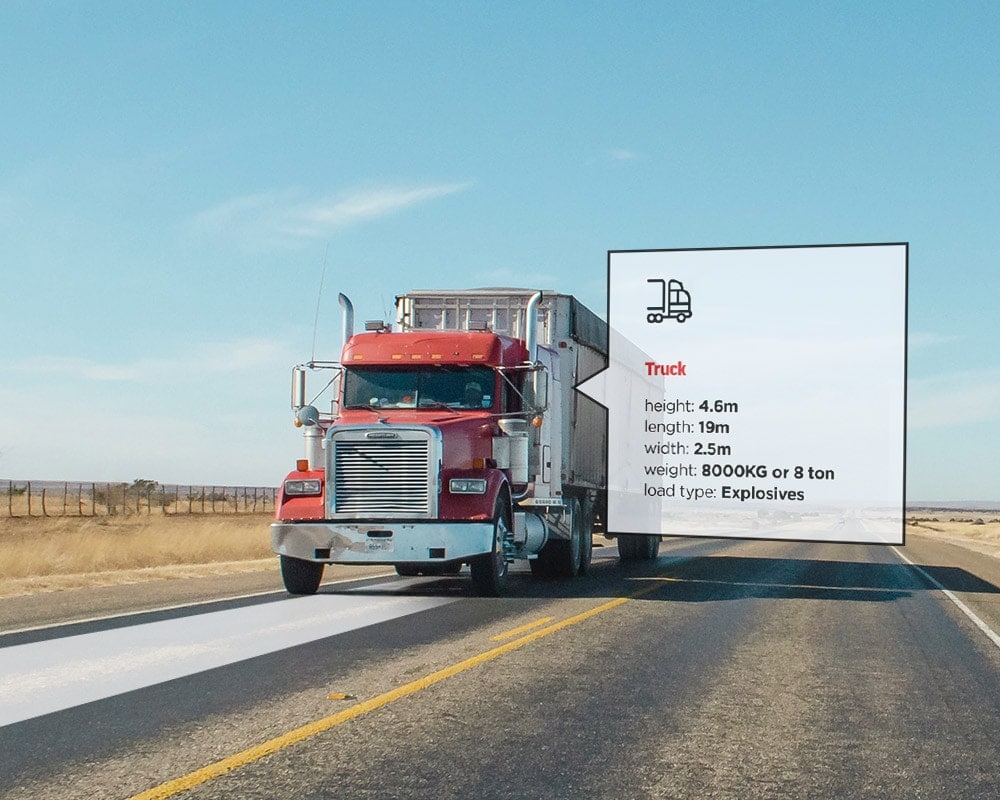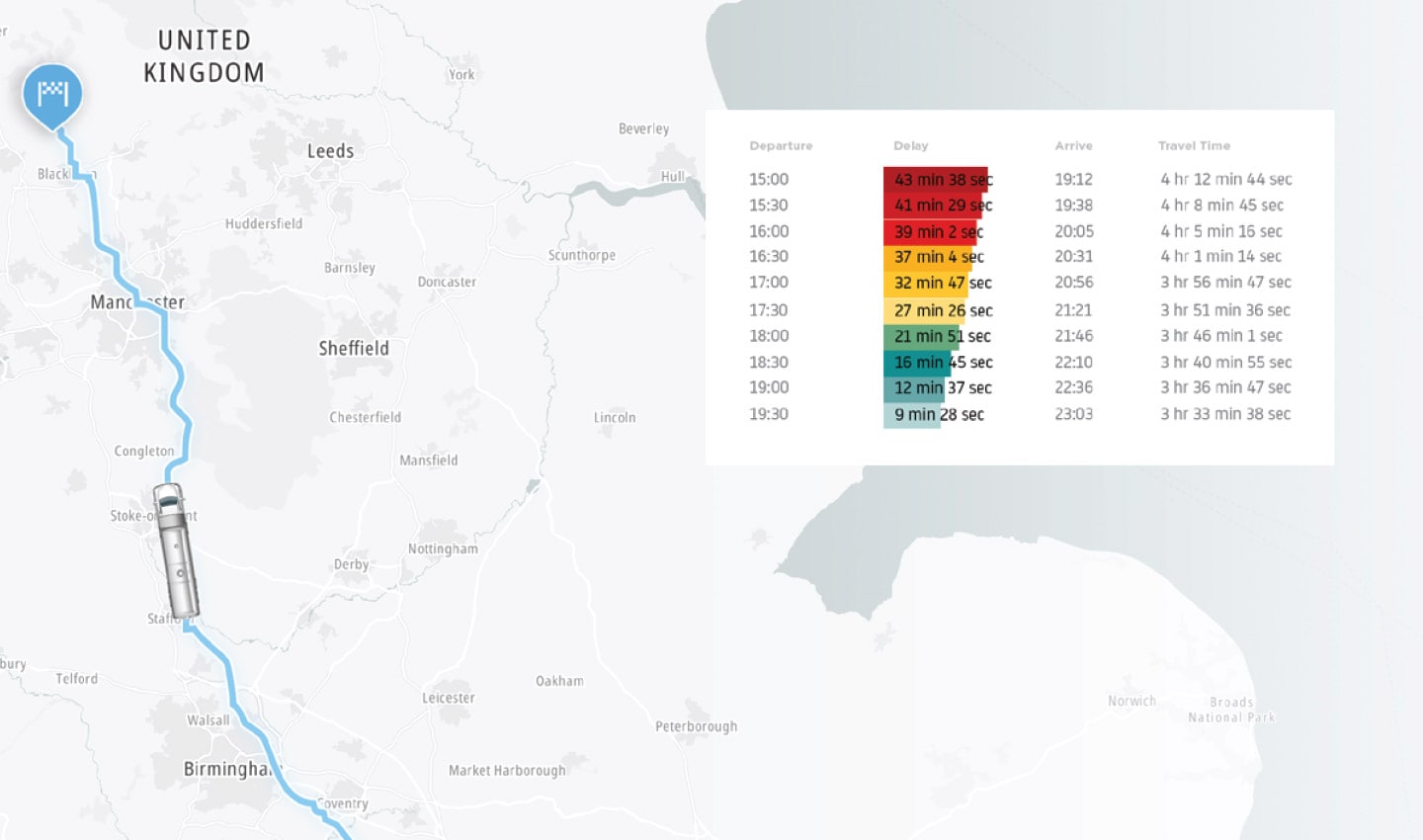
Routing a truck is vastly different from routing a car – how do you do this in a reliable and scalable way?
Not all vehicles are able to travel the same routes to get to their destination safely and on time, which is a business-critical issue for fleet operators and logistics service providers. Trucks need to consider the size, weight and type of cargo they are carrying. And telematics and truck routing solutions need to consider the challenges that fleet managers face: cost control, Service Level Agreements (SLAs) requirements, local regulations and driver safety.
The right location technology is key to getting trucks where they need to go – safely and efficiently.
Challenges of truck routing:
Route compliance: Fleet management and logistics software companies invest a lot of time, effort and money to provide reliable and scalable truck routing software that addresses vehicle dimensions, type of cargo, restricted access to certain roads, speed limits and toll roads - locally and internationally. Drivers that don’t travel compliant routes face fines and other unexpected expenses, not to mention delays in deliveries and the inability to meet Service Level Agreements.
Safety of the driver and cargo: Some highways and tunnels have specific ADR codes and restrictions regarding the type of materials trucks can transport. As such, bigger trucks need to avoid roads that are too steep and bridges with height and width limitations. Complex maneuvers are also a challenge for large vehicles, especially on narrow roads.
Fuel consumption:Fuel consumption impacts the bottom line and the environment. Creating the most fuel-efficient routes makes it possible to predict gas consumption and prevent fuel theft. Proper planning also helps to reduce wasteful idling.
Optimal time of departure: Choosing the best time to travel reduces avoidable delays and ensures drivers get to their destination on time. Speed profiles and traffic information help determine optimal routes and departure times.
This is where the right truck routing software comes in. Implementing robust, scalable location technology relies not only on accurate map data, but also on relevant information that makes journeys as efficient and safe as possible.
The role of location technology
Location tech understands how quickly things can change on the road and maps routes accordingly. Real-time updates and route optimization let drivers know if they are on schedule, behind or early – or if there are any important changes to consider.
For truck routing software to perform at its peak, it's key to integrate reliable, scalable location technology that is built with fleets in mind. In recent years, location technology – be it map data or APIs – has become increasingly accessible. Today, companies can add extensive logistics datasets to optimize software or directly integrate a Routing API to add routing capabilities.
Why TomTom Routing API?
The TomTom Routing APIs is one of the most advanced on the market and includes support for trucks and consumption models. In providing the most fuel-efficient, compliant routes, the API takes into account factors such as height, length, weight and cargo type. Our batch and matrix routing services also power optimization algorithms with accurate distances and travel times.

To help with fuel consumption and fraud, our Combustion Consumption feature helps calculate the expected fuel consumption for a trip. With it, we can compare expected consumption with actual to detect theft.
As driver safety is a main priority, we also offer the AvoidAreas parameter to avoid specific places.
Mapping data for truck routing
Fleet management and logistics software providers are also able to optimize advanced routing and planning algorithms with extensive logistics datasets and traffic feeds. The most effective truck routing software considers the following:
Vehicle attributes - height, length, weight
Cargo type - with special care taken for hazardous materials
Road characteristics – road type, gradient, curvature
Local regulations that are specific to logistics – speed limits, restricted areas, toll roads
Historical traffic information and Speed Profiles
Advanced real-time traffic information
Check out our Fleets and Logistics Industry page
Explore our offering and read customer stories from those who already trust TomTom technologies.
Staying up to date with the world
The world is evolving and so is location technology - with the expectations of faster, more efficient and more timely deliveries, the usage of assets for safe fleet operations becomes even more important.
In order to meet these high expectations, operations need to go smoothly and safely. TomTom builds technologies with fleets in mind: our business models and technology stack adapt accordingly. Whether using hosted APIs, adding our datasets to your own software or combining them both – TomTom helps drivers navigate as safely, comfortably and efficiently as possible.
Find out our how TomTom’s location technology can help streamline your fleet’s mapping and routing.
People also read
)
How to optimize fleet routing and improve ETAs
)
How IFS optimizes planning and scheduling using TomTom location insights
)
How ADAS helps truck drivers stay safe and drive efficiently
* Required field. By submitting your contact details to TomTom, you agree that we can contact you about marketing offers, newsletters, or to invite you to webinars and events. We could further personalize the content that you receive via cookies. You can unsubscribe at any time by the link included in our emails. Review our privacy policy. You can also browse our newsletter archive here.
)